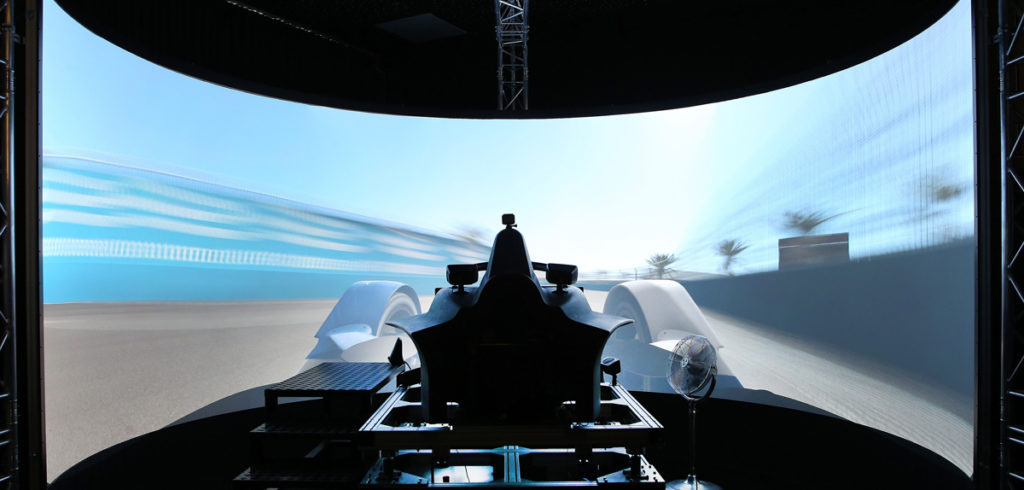The use of DIL simulators has never been more important to race teams with such equipment, thanks to the current minimal on-track action. In the case of the BMW i Andretti Motorsport team, it has been relying heavily on its simulator capability during this enforced pause in the Formula E season.
Before the start of the current break, it was the same ritual before every Formula E race weekend with engineers and drivers from the BMW i Andretti Motorsport team preparing together in the simulator for the pending event.
With practice sessions, qualifying and the race on the same day, the teams have barely any time remaining for test and development work. That all has to be done in advance. Chief engineer Valentino Conti coordinates both race and simulator operations for the team. The current break in racing offered the opportunity for him to explain the process behind the simulator work and its goals, and why it is essential for success in Formula E.
“If we did not have the tests in the simulator beforehand, we would be lacking a lot of performance,” noted Conti, adding, “Any knowledge you don’t acquire in the simulator is very difficult to catch up on at the circuit.”
Preparations for a simulator session begin with planning meetings and a functional test for the software, which supplies the simulator with the respective circuit and car data. “Around 95% of the engineers are usually involved in the preparations, plus a few people who are responsible for the operational process in the simulator,” said Conti.
“I like to have as many people as possible at the simulator tests, whether it be engineers or drivers. In my opinion, that is imperative. The whole team arrives at the racetrack with totally different knowledge and experience. It is very difficult to convey this knowledge on-site to someone who was not there during the preparations.”
The itinerary for the simulator test sessions are based on a clear plan, which is determined in advance. It starts with a comparison of data gathered at previous races, which is followed by many short sim runs, the aim of which is to try out different setups and configurations of the car’s drivetrain.
When it comes to correlating simulator and track performance, Conti said, “We have a high rate of success. We have even had situations where we have been able to implement the energy management strategy we developed in the simulator on a 1:1 basis in the race.”
However, he was also keen to play down this success. “That success rate obviously fluctuates. There are always certain surprises at the circuit. However, thanks to being well prepared, we are generally able to react to them very quickly.”
When real racing is allowed, the team’s track walk plays a very important role in being able to check for any differences to the version they had driven in the simulator. For example, has the radius of a corner changed? Can a driver cut the curbs, or are they possibly too high?
On a live race weekend, “The shakedown is really nothing more than a functional test,” Conti explained, “but we also use it to compare the grip conditions to those that we had simulated in advance. We then discuss whether we may need to change things, before we prepare our plans A, B and C for the race day to be able to react as flexibly as possible. It is one thing after another on the Saturday and there is no time for any major discussions.”
How good a job was done in the simulator is revealed by the first practice session on the morning of race day, if not beforehand in the shakedown. Any major issues encountered make life difficult. “On the odd occasion, even we can get the setup wrong,” admitted Conti. “You can catch up, but it is difficult: the competition, who may arrive better prepared, are improving all the time, which means you must improve faster than they do.”
Conti highlighted the opening round of Season 6, in Saudi Arabia last November, as a positive example of this kind of fightback. “We were surprised by the extremely low grip levels there, which we had not predicted in the simulation. However, we were able to react to that quickly and claimed two pole positions and victory in the Saturday race.”
It remains uncertain when Formula E will return to the real racetrack. When that time does come, however, Conti and his teammates want to be ready. To ensure that is the case, they are regularly in the simulator to run through their processes: “Just to stay in training,” said Conti.



